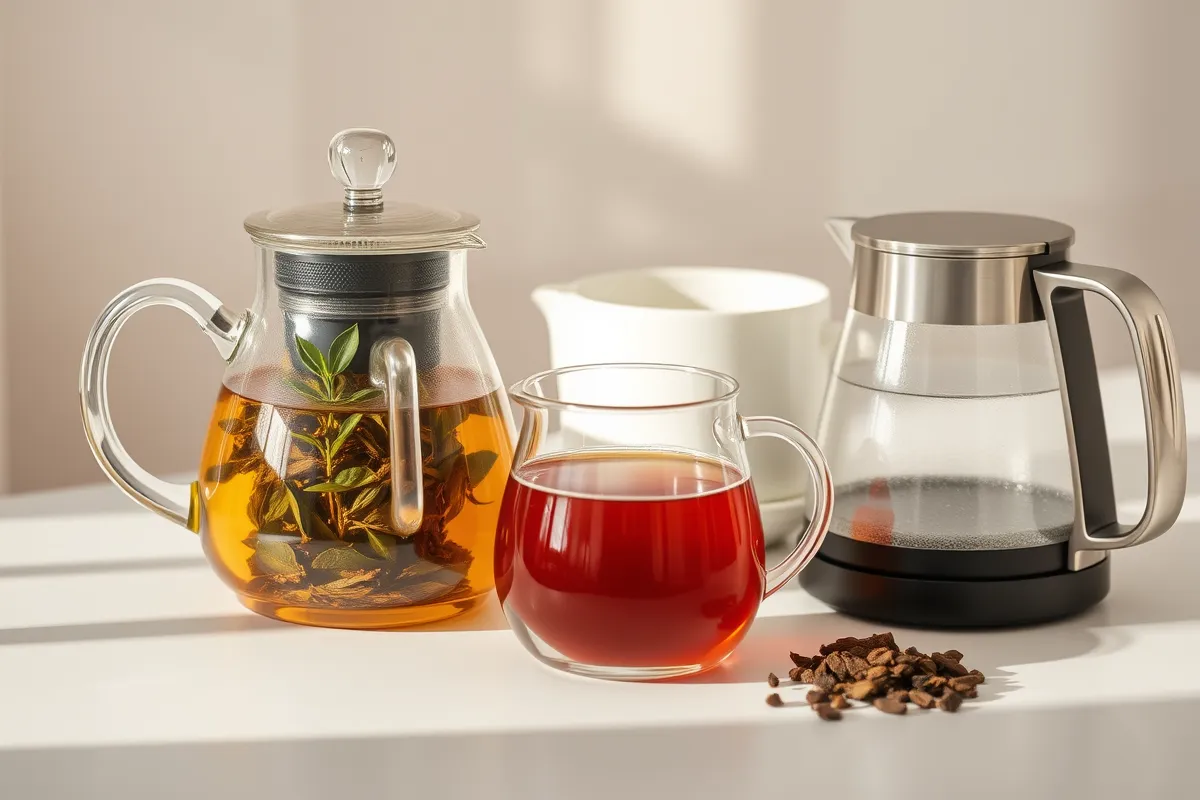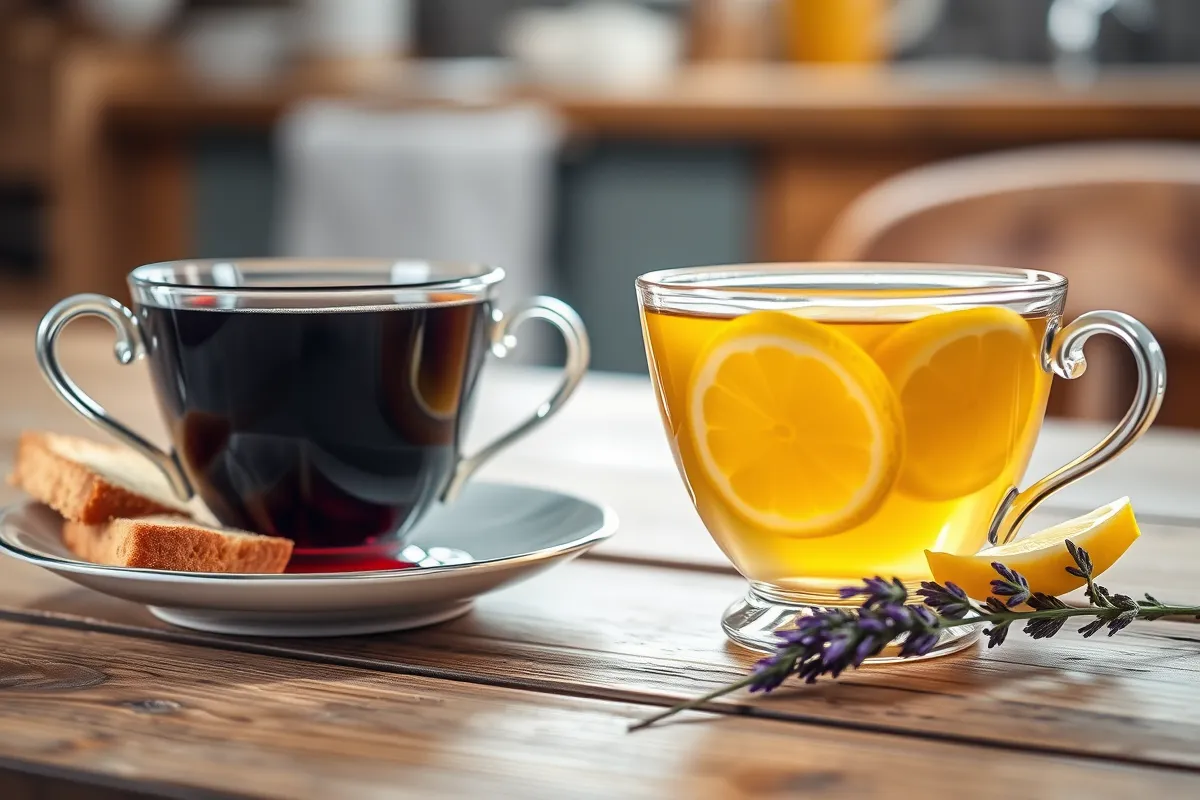English Breakfast Tea vs Earl Grey: A Comprehensive Comparison
Tea, a cherished beverage worldwide, holds a special place in our hearts and our routines. Among the vast variety of teas, two classic favorites stand out: English Breakfast Tea and Earl Grey Tea. These iconic brews are staples in many homes, offering distinct flavors, aromas, and cultural significance. But what sets them apart? In this guide, we’ll dive deep into their origins, ingredients, brewing techniques, and more to help you understand their unique characteristics and decide which one suits your preferences best.
What Are English Breakfast Tea vs Earl Grey?
Understanding English Breakfast Tea
Origin and History
English Breakfast Tea, as the name suggests, traces its roots back to England. It emerged during the early 19th century as a hearty beverage that complemented the rich, full English breakfast. Although its exact origin is debated, this tea blend gained popularity for its robust flavor and versatility, becoming a timeless choice across the globe.
Ingredients and Flavor Profile
Typically, English Breakfast Tea is a blend of black tea leaves from regions like Ceylon, Assam, and Kenya. Its flavor is bold and malty, with a touch of sweetness that pairs well with milk and sugar. Unlike other teas, it provides a strong, full-bodied taste that kickstarts the day with vigor.
Popular Pairings and Serving Styles
Traditionally served with milk and sugar, this tea is a breakfast companion, often paired with toast, eggs, and marmalade. However, it can also be enjoyed plain, allowing its inherent strength to shine through.
What is Earl Grey Tea?
The Story Behind Earl Grey
Earl Grey Tea boasts an air of sophistication, rooted in the legacy of Charles Grey, the 2nd Earl Grey, after whom the tea is named. The blend’s distinctive character comes from the infusion of bergamot oil, a fragrant citrus extract. While tales of its origin vary, one popular myth suggests it was a diplomatic gift from China.
Ingredients and Flavor Profile
Unlike English Breakfast, Earl Grey Tea is defined by its infusion of bergamot oil. This aromatic essence, combined with black tea leaves, gives it a delicate, citrusy aroma with subtle floral undertones. Its light yet distinctive taste sets it apart from more robust black teas.
Serving Styles
Earl Grey is incredibly versatile. Some enjoy it plain, savoring its unique flavor, while others add milk, lemon, or even honey for a sweeter twist. Variants like Lady Grey Tea, which include additional floral notes, further enhance its appeal.
What Are English Breakfast Tea vs Earl Grey?
Understanding English Breakfast Tea
Origin and History
English Breakfast Tea’s story begins in 19th-century England, where it quickly became a beloved morning staple. Its origins are often linked to tea merchant Richard Davies, who introduced the blend in the United States around 1843. Back in England, this bold black tea was perfectly suited to complement the hearty English breakfast—hence the name. Over time, its popularity spread globally, solidifying its place as a timeless classic.
Ingredients and Flavor Profile
This blend typically combines black teas from regions like Assam, Ceylon, and Kenya, creating a robust and malty brew. Each region’s tea contributes unique qualities: Ceylon adds brightness, Assam lends richness, and Kenyan tea offers a brisk edge. The result? A bold, full-bodied cup that’s as energizing as it is flavorful. Its earthy undertones and slight sweetness make it an ideal choice for morning tea drinkers.
Popular Pairings and Serving Styles
Traditionally, English Breakfast Tea is served with milk and sugar, allowing the creamy texture to balance its strength. However, purists might prefer it plain to enjoy its raw robustness. Pairing it with toast, eggs, or marmalade highlights its breakfast-friendly appeal, though it’s equally delightful on its own.
What is Earl Grey Tea?
The Story Behind Earl Grey
Earl Grey Tea owes its name to Charles Grey, the 2nd Earl Grey, who served as British Prime Minister in the 1830s. One popular legend claims he received the recipe as a gift from a Chinese diplomat, though the truth remains uncertain. What sets this tea apart is the addition of bergamot oil, a fragrant essence derived from bergamot orange rind, which gives the tea its signature aroma and flavor.
Ingredients and Flavor Profile
At its core, Earl Grey is a black tea infused with bergamot oil. This ingredient creates a delicate balance of floral and citrus notes, making it lighter and more aromatic than English Breakfast Tea. Some modern blends include green or white tea bases, but the classic black tea version remains the most cherished.
Serving Styles
Earl Grey can be enjoyed in various ways: plain, with lemon for added zest, or with milk and honey for a richer experience. Lady Grey Tea, a variation, introduces additional floral notes, while iced Earl Grey offers a refreshing twist for warmer days. Its versatility makes it a favorite at afternoon tea parties.
Key Differences Between English Breakfast Tea vs Earl Grey

Flavor and Aroma
The most noticeable difference lies in their flavor profiles. English Breakfast Tea boasts a bold, malty flavor, while Earl Grey charms with its light, citrusy aroma. The addition of bergamot in Earl Grey introduces a floral sophistication absent in the robust English Breakfast blend.
Blend and Ingredients
English Breakfast is a hearty mix of black teas from Assam, Kenya, and Ceylon, designed to deliver strength and depth. Conversely, Earl Grey relies on its black tea base combined with bergamot oil, which adds a distinctive fragrance and taste that tea lovers recognize instantly.
Caffeine Levels
While both teas are caffeinated, English Breakfast Tea typically has a slightly higher caffeine content, making it the go-to morning energizer. Earl Grey, being lighter, is often considered better suited for an afternoon pick-me-up.
Best Times to Drink
English Breakfast Tea shines as a morning staple, complementing hearty meals and kickstarting the day. Meanwhile, Earl Grey’s subtlety makes it ideal for afternoons or evenings, pairing well with biscuits or light snacks.
Health Benefits
Both teas share the antioxidant benefits of black tea, which can help combat oxidative stress and promote heart health. Earl Grey, however, offers unique advantages due to bergamot oil, which is known for its mood-enhancing and digestive properties.
Brewing and Preparation Techniques
How to Brew English Breakfast Tea
Brewing the perfect cup of English Breakfast Tea involves attention to detail and a touch of patience. Start by boiling fresh, filtered water to a temperature of about 95–100°C (203–212°F). Using water that’s too cool can result in a weak and uninspiring brew.
Place one teaspoon of loose-leaf tea (or a tea bag) into your teapot or cup, then pour the hot water over it. Let it steep for 3–5 minutes, depending on your preferred strength. Oversteeping can make the tea bitter, so keep an eye on the clock. For an extra touch of smoothness, add milk or sugar, though purists might prefer it plain to enjoy its malty undertones.
Tips for a Perfect Cup:
- Always pre-warm your teapot or mug with hot water to maintain the temperature.
- Experiment with steeping times to discover the flavor balance you love most.
Brewing Earl Grey Tea
Brewing Earl Grey Tea follows a similar process but with a few nuances to highlight its delicate flavors. Use water heated to 90–95°C (194–203°F) to preserve the citrusy essence of bergamot.
Steep one teaspoon of loose-leaf tea (or a tea bag) for 3–4 minutes. Earl Grey is lighter than English Breakfast Tea, so it doesn’t need as much time to infuse fully. Enjoy it plain to savor its natural aroma, or enhance it with a slice of lemon or a dash of honey.
Variations:
- For a refreshing treat, try iced Earl Grey. Brew it as usual, then chill and serve over ice.
- Create a creamy Earl Grey latte by steeping the tea, adding steamed milk, and sweetening it to taste.
Which Tea is Better (English Breakfast Tea vs Earl Grey) ?
Personal Preferences and Tastes
Choosing between English Breakfast Tea and Earl Grey often comes down to your personal preferences and the occasion. English Breakfast Tea’s bold and malty profile suits hearty breakfasts or moments when you need a strong caffeine boost. Earl Grey, with its fragrant and citrusy aroma, feels more sophisticated and perfect for a relaxed afternoon break.
Matching tea to your mood is also worth considering. Want an energizer? English Breakfast Tea has your back. Craving something light and aromatic? Earl Grey is an excellent choice.
Nutritional and Lifestyle Considerations
From a health perspective, both teas are packed with antioxidants, which support overall well-being. However, Earl Grey offers an edge thanks to bergamot oil, which has calming properties and may aid digestion.
When it comes to caffeine tolerance, English Breakfast Tea generally contains slightly more caffeine than Earl Grey, making it a stronger morning companion. Both teas are available in decaffeinated versions, making them suitable for all lifestyles.
FAQs About English Breakfast Tea vs Earl Grey
What makes English Breakfast Tea different from Earl Grey?
English Breakfast Tea is bold and malty, while Earl Grey has a citrusy, floral flavor due to the addition of bergamot oil.
Can you drink Earl Grey Tea in the morning?
Absolutely! Earl Grey’s moderate caffeine content makes it an excellent choice for mornings or afternoons.
Does English Breakfast Tea have more caffeine?
Typically, yes. English Breakfast Tea contains slightly more caffeine than Earl Grey, offering a stronger energy boost.
What are the health benefits of bergamot in Earl Grey Tea?
Bergamot oil may improve digestion, reduce stress, and support heart health, making Earl Grey a fragrant and functional choice.
Which tea is more suitable for weight loss?
Both teas are low-calorie and contain compounds that support metabolism, but Earl Grey’s bergamot oil might provide an added edge.
Are there decaffeinated versions of both teas?
Yes! Both English Breakfast Tea and Earl Grey are available in decaffeinated options, catering to those with caffeine sensitivities.
Final Thoughts on English Breakfast Tea vs Earl Grey
Both English Breakfast Tea and Earl Grey Tea are timeless classics that bring unique flavors, aromas, and cultural significance to the table. Whether you prefer the bold, malty richness of English Breakfast Tea or the light, citrusy sophistication of Earl Grey, there’s no wrong choice—only what suits your mood and taste. So, why not explore both and let your taste buds decide?

